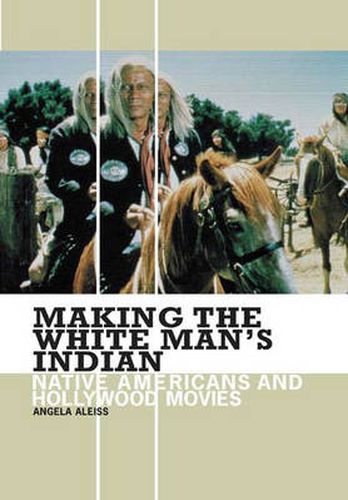Readings Newsletter
Become a Readings Member to make your shopping experience even easier.
Sign in or sign up for free!
You’re not far away from qualifying for FREE standard shipping within Australia
You’ve qualified for FREE standard shipping within Australia
The cart is loading…






The image in Hollywood movies of savage Indians attacking white settlers represents only one side of a very complicated picture. In fact sympathetic portrayals of Native Americans stood alongside those of hostile Indians in the silent films of D.W. Griffith and Cecil B. DeMille, and flourished during the early 1930s with Hollywood’s cycle of pro-Indian adventures. Decades later, the stereotype became even more complicated, as films depicted the savagery of whites (The Searchers) in contrast to the more peaceful Indian (Broken Arrow). By 1990, the release of Dances with Wolves appeared to have recycled the romantic and savage portrayals embedded in early cinema. In this new study, author Angela Aleiss traces the history of Native Americans in the cinema, and breaks new ground by drawing on primary sources such as studio correspondence, script treatments, trade newspapers, industry censorship files, and filmmakers’ interviews to reveal how and why Hollywood created its Indian characters. Behind-the-scenes anecdotes of filmmakers and Native Americans, as well as rare archival photographs, supplement the discussion, which often shows a stark contrast between depiction and reality. The book traces chronologically the development of the Native American’s screen image while also examining many forgotten or lost Western films. Each chapter features black and white stills from the films discussed, and an appendix offers brief biographies of notable Native American (and pretend Native American ) actors and filmmakers.
$9.00 standard shipping within Australia
FREE standard shipping within Australia for orders over $100.00
Express & International shipping calculated at checkout
The image in Hollywood movies of savage Indians attacking white settlers represents only one side of a very complicated picture. In fact sympathetic portrayals of Native Americans stood alongside those of hostile Indians in the silent films of D.W. Griffith and Cecil B. DeMille, and flourished during the early 1930s with Hollywood’s cycle of pro-Indian adventures. Decades later, the stereotype became even more complicated, as films depicted the savagery of whites (The Searchers) in contrast to the more peaceful Indian (Broken Arrow). By 1990, the release of Dances with Wolves appeared to have recycled the romantic and savage portrayals embedded in early cinema. In this new study, author Angela Aleiss traces the history of Native Americans in the cinema, and breaks new ground by drawing on primary sources such as studio correspondence, script treatments, trade newspapers, industry censorship files, and filmmakers’ interviews to reveal how and why Hollywood created its Indian characters. Behind-the-scenes anecdotes of filmmakers and Native Americans, as well as rare archival photographs, supplement the discussion, which often shows a stark contrast between depiction and reality. The book traces chronologically the development of the Native American’s screen image while also examining many forgotten or lost Western films. Each chapter features black and white stills from the films discussed, and an appendix offers brief biographies of notable Native American (and pretend Native American ) actors and filmmakers.